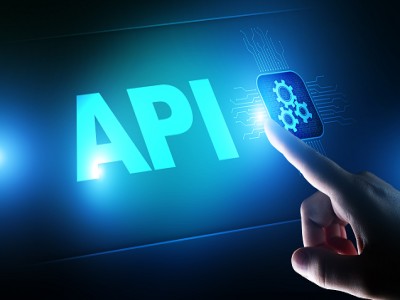Quick Inquiry

MuleSoft API Led Connectivity
Short Overview About MuleSoft API Led Connectivity
MuleSoft is a leading platform for building and managing APIs and integrations. It offers a powerful and flexible way to connect data and applications across any environment, whether on-premises, cloud, or hybrid. But how can you leverage MuleSoft to create a composable enterprise that can adapt to changing business needs and deliver value faster? The answer is API Led Connectivity, a methodology that MuleSoft has pioneered and championed. In this blog post, we will explain what MuleSoft API Led Connectivity is, how it works, and what benefits it can bring to your business.
What is API Led Connectivity?
API Led Connectivity is a methodology that connects data to applications using purposeful and reusable APIs. An API (Application Programming Interface) is a set of rules and specifications that define how different software components can communicate and exchange data. APIs can be used to expose data and services from various sources, such as databases, ERP systems, CRM systems, legacy systems, cloud services, etc.
API Led Connectivity uses APIs as building blocks that can be composed and reused to create different business capabilities and processes. For example, you can use APIs to create a customer onboarding process that involves validating customer data, creating an account in Salesforce, sending a welcome email, etc. Each of these steps can be implemented as an API that can be reused across different channels and applications.
API Led Connectivity comprises three layers of APIs: Experience API, Process API, and System API. Each layer has its own roles, responsibilities and functionalities.
-
Experience API : tailors the data and services to the needs of a specific channel or audience, such as mobile app, web app, or partner. For example, you can use an Experience API to provide a simplified and consistent view of customer data across different devices and platforms.
-
Process API : orchestrates multiple downstream APIs (such as System APIs) to create a business process or capability, such as order fulfillment, customer onboarding, or inventory management. For example, you can use a Process API to coordinate the steps involved in fulfilling an order from different systems and services.
-
System API : exposes the data and services from a system of record (such as database, ERP, CRM, or legacy system) in a secure and reliable way. For example, you can use a System API to abstract the complexity and details of accessing data from a SAP system.
How does API Led Connectivity work?
API Led Connectivity works by following these steps:
-
Identify the data sources and applications that you need to connect and integrate.
-
Design and implement System APIs for each data source and application using MuleSoft Anypoint Platform. Anypoint Platform is a unified platform that provides tools for designing, developing, testing, deploying, managing, and monitoring APIs and integrations.
-
Design and implement Process APIs that orchestrate multiple System APIs to create business capabilities and processes using MuleSoft Anypoint Platform. You can use MuleSoft Flow Designer or MuleSoft Studio to create low-code or code-based integrations respectively.
-
Design and implement Experience APIs that tailor the data and services to the needs of specific channels and audiences using MuleSoft Anypoint Platform. You can use MuleSoft API Designer or MuleSoft Studio to create RESTful or SOAP-based APIs respectively.
-
Publish and document your APIs using MuleSoft Anypoint Exchange. Anypoint Exchange is a central repository where you can discover, share, and reuse APIs and other assets across your organization.
-
Secure and govern your APIs using MuleSoft Anypoint API Manager. Anypoint API Manager is a tool that allows you to apply policies, monitor performance, analyze usage, troubleshoot issues, and manage the lifecycle of your APIs.
-
Consume your APIs using any application or channel that supports standard protocols such as HTTP(S), JMS, AMQP, etc.
What are the benefits of API Led Connectivity?
MuleSoft API Led Connectivity offers many benefits for your business, such as:
-
Faster development: By using reusable APIs as building blocks, you can accelerate the development of new applications and integrations. You can also leverage MuleSoft’s pre-built connectors and templates to connect to hundreds of popular systems and services with minimal coding.
-
Easier maintenance: By decoupling the data and services from the applications and channels, you can reduce the dependencies and complexity of your integrations. You can also update or change your APIs without affecting the consumers, as long as you maintain backward compatibility.
-
Greater reusability: By creating purposeful and reusable APIs, you can avoid duplication and redundancy of logic and data across your integrations. You can also discover and reuse existing APIs and assets from MuleSoft Anypoint Exchange, reducing the need to reinvent the wheel.
-
Higher agility: By creating a composable enterprise that can adapt to changing business needs, you can deliver value faster and respond to market opportunities and customer demands more effectively. You can also enable self-service and collaboration among different teams and stakeholders, empowering them to create and consume APIs with ease.
Conclusion :
MuleSoft API Led Connectivity is a methodology that can transform your business by connecting data and applications using purposeful and reusable APIs. It can help you create a composable enterprise that can optimize agility and flexibility, while ensuring security and reliability. With Mulesoft Anypoint Platform, you can design, implement, publish, document, secure, govern, monitor, and consume APIs with ease. If you want to learn more about MuleSoft API Led Connectivity, you can visit their website or contact us for a free consultation.

